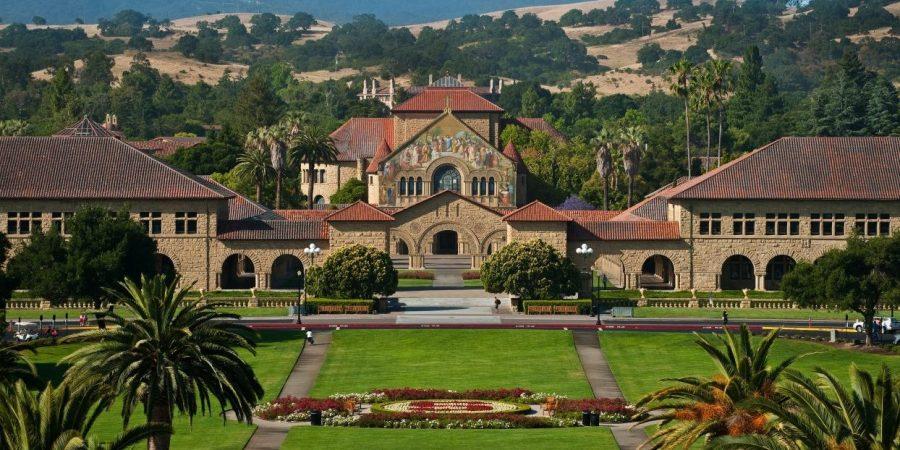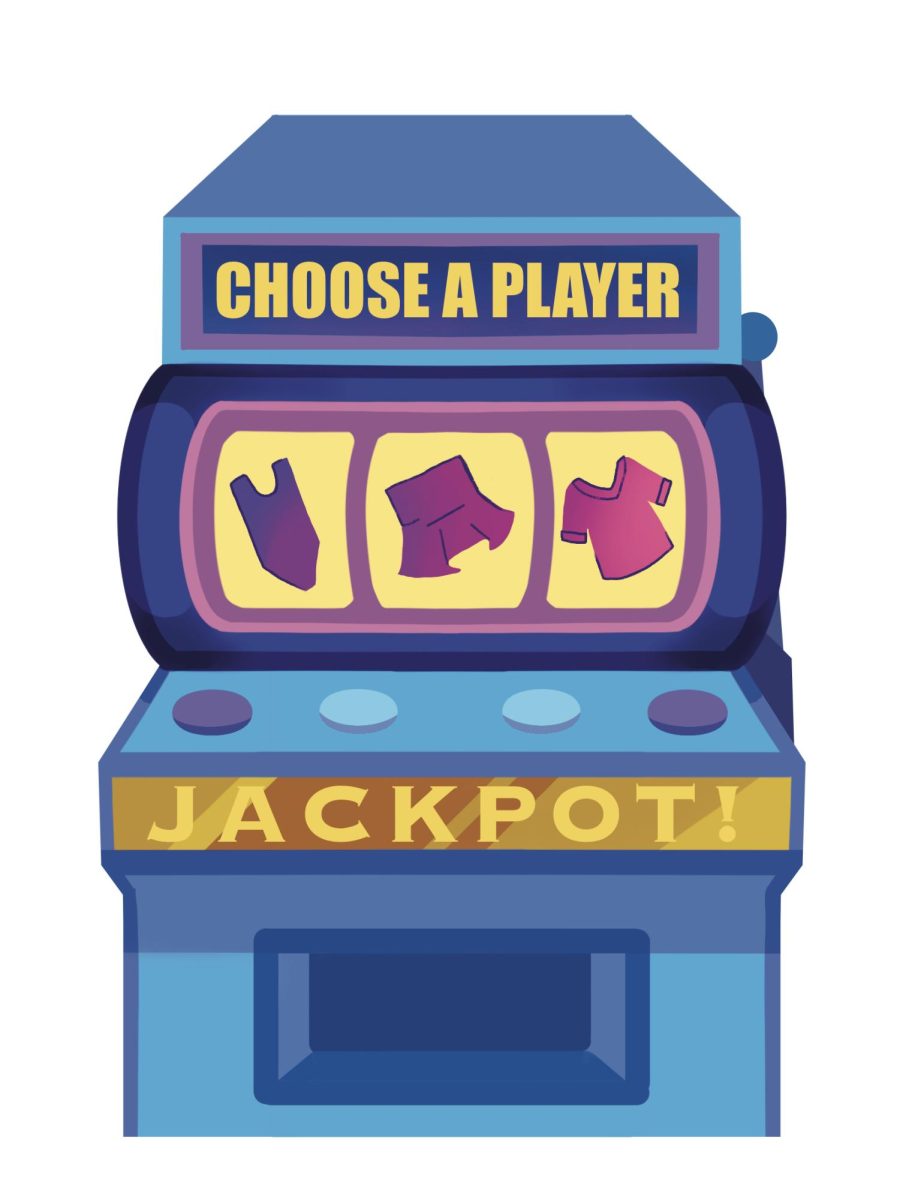The issue of race in higher education has spearheaded a polarizing debate that still permeates college admissions today. Affirmative action, a concept that would ideally eliminate racial barriers in the workforce and give people of color increased opportunities, has been the center of many College Confidential forum posts, a topic of dinner-table discussions, and a recurring issue in court cases nationwide.
Among minority students interviewed at Paly, many agree that affirmative action is important and helpful to them, but they understand that it raises questions about how to find the right balance between diversity and merit in college admissions, and even how merit should be defined.
[divider]The History of Affirmative Action[/divider]
Although affirmative action, in principle, relates to both higher education and the workforce, the role of race in college admissions is a recurring thought that many place in the back of their minds. Affirmative action is, according to FiveThirtyEight.com, a tool to “encourage universities to use an applicant’s race as an admissions factor in order to increase racial diversity on campus.” In essence, it is there to prevent colleges from taking high-achieving students from a sole racial group.
Dating back to 1961, affirmative action programs were introduced to American universities by President John F. Kennedy in order to combat rampant racial discrimination. It was then enforced by President Lyndon B. Johnson who dubbed it as “the next stage for the battle of Civil Rights.” By creating affirmative action, the government hoped to level the playing field in job opportunities and college admissions for individuals of all backgrounds.
Since then, affirmative action has experienced a long history of legal support. The first case came in the form of Regents of the University of California v. Bakke. At the time, the school mandated a minimum quota to accept 16 “qualified minorities” per 100 students admitted in an attempt to address the longstanding underrepresentation of minority students in the medical field. Allan Bakke, a white man who had applied twice to the University of California Medical School at Davis, was rejected both times despite having better numerical qualifications than all the minority students accepted in both applications. Thus, the fundamental question was born: Does the consideration of race in the college admissions process violate the Fourteenth Amendment’s equal protection clause and the Civil Rights Act of 1964?
Ultimately, the Supreme Court ruled in favor of Bakke and simultaneously extended rights to minority groups through affirmative action. While the medical school was instructed to admit Bakke due to a violation of the Civil Rights Act of 1964, Justice Lewis F. Powell, Jr., the deciding vote in the case, contended that using race as a criteria in the admissions process of higher education is constitutionally permissible only if there is no specific quota of admittees imposed on a certain race.
Another prominent decision came during the case of Fisher v. University of Texas. In 1997, a Texas legislature declared that the University of Texas must accept all high school seniors represented in the top 10 percent of their graduating class, leaving the remainder of the available spots would be evenly up for contention among the rest of the applicant pool. However, after conducting studies analyzing the racial makeup of those accepted compared to the rest of the state, the university decided to include race as a factor in evaluating its applicants who do not fall in the category of top 10 percent students.
Abigail N. Fisher, who failed to make the 10 percent criteria and was ultimately denied entry to the university in 2008, believed that race was an unfair factor in her consideration and subsequent rejection. Fisher claimed that using race as a factor in the admissions process violates the equal protection clause of the Fourteenth Amendment. The opposing argument claimed that a carefully supervised evaluation of race was meant to increase diversity of the student population. Due to the precedent set by Regents of the University of California v. Bakke, the decision went in favor of the University of Texas.
[divider]The Lack of an Ideal[/divider]
Within the Palo Alto community, students are cognizant of the impact that affirmative action has on their lives, especially for minorities.
“Going back to its initial intent, affirmative action has allowed for greater diversity within the student population of universities, adequately fulfilling the purpose it was set out to do,” said junior Miguel Moreno. “I believe that affirmative action has had quite a big impact on the U.S. by definitely increasing diversity throughout the years but also becoming a topic of distress for many in the country.”
However, while acknowledging the merits of affirmative action, students also understand that problems arise when those in the minority population fail to reap its benefits.
“Personally, I think the fact that Asians are hurt by affirmative action makes no sense and goes against the reasons why it was created. Asians were not historically at the top of society and were often discriminated against.”
Nicholas Camarena, Paly senior
The most difficult aspect of finding a solution for this issue comes down to fairly weighing diversity in colleges against merit.
“It is hard to find the perfect balance because society is always changing,” Camarena said. “If colleges weigh merit too heavily, then minorities, who tend to be poorer, will struggle to work their way out of poverty. If colleges weigh diversity too heavily, at some point they will be undermining the academic strength of the school.”
Still others believe that the gap intended to be bridged by affirmative action is inadvertently widened by assumptions made about the opaque procedure of college admissions.
“From a culture that has been riddled with segregation and discrimination, it’s hard to flip a switch and suddenly become equal,” said senior Candace Wang. “Though the government tries their best through programs like affirmative action, these ideas often lead to problems that hurt more than they help; students are antagonized because others may underestimate their achievement and overestimate the role in which race played in the admissions process.”
Moreno also believes that affirmative action creates a false pretense that minority students get accepted to institutions purely because of their race.
“People may think that because of this, underrepresented minorities don’t have to work hard during their high school years, which then causes discord among applicants and others,” Moreno said.
[divider]The Impact on Asian Americans[/divider]
Harvard University cites a class makeup of 12.6 percent Hispanic, 13.7 percent African American, 22.1 percent Asian, 2.6 percent Native American and 49 percent Caucasian for the Class of 2020. When compared to the ethnic makeup of America, which, according to the 2010 census, has roughly 63.7 percent Caucasian, 12.2 percent African American, 16.3 percent Hispanic and 4.6 percent Asian, some striking numbers pop out. First, the population of African Americans and Hispanics, historically labeled underrepresented minorities, roughly mirrors that of Harvard. However, there is a disproportionate amount of Asians selected: 22 percent to 5 percent, a nearly fivefold difference. It is clear that affirmative action has worked to keep some of the numbers fair, but this still fails to explain the abundance of Asians in post-secondary education.
Using the example of Harvard, the number of Asians is about the number of Hispanics and African Americans combined, at 22.1 percent for Asians and 22.8 percent for both races combined. From the data given, it looks like all is right with admissions at Harvard University. If X percent of applications are a certain race, then X percent of total admittees will be from that race. However, there lies a problem much deeper than what the numbers show.
In 2005, a study by Princeton University came under public scrutiny. The study claimed that the average Asian-American applicant must score 140 points higher than an identical average white applicant on the 1600 point SAT to be considered equal in the eyes of admissions officers. Outraged, several groups for Asian-Americans immediately formed to protect what they called “fairness of equal education opportunities.”
Most notably, the Asian American Coalition for Education (AACE) pursues equality in the form of civil rights complaints, asking the Department of Education and Justice to investigate admissions at notable colleges, namely Yale University, Brown University and Dartmouth College, all of which are part of the Ivy League. The coalition, which represents more than 135 smaller organizations with the same mission, claims that these admission committees discriminate unfairly against Asian Americans. They argue that the officers there have implicit racial quotas to fill, and to do so they reject Asian American applicants who are equally or more qualified than their white or minority counterparts.
The Students For Fair Admissions (SFFA), another coalition protesting college admissions on racial grounds, asserts that although the amount of Asian Americans in America has skyrocketed since the 1990s, the proportion admitted into high-tier universities has just about plateaued. Edward Blum, the president of SFFA, also supports the idea of fulfilling “quotas” that are not necessarily explicitly set by the administration.
“[Studies suggest] that Harvard and the other Ivies have a hard-fast, intractable quota limiting the number of Asians that they will expect.”
Edward Blum, president of SSFA
To use a “control variable” in college admissions, these groups took a look at the California Institute of Technology (Caltech), often ranked as one of the top universities in the nation, in Pasadena, Calif. They point out that at Caltech — which does not use “holistic admissions” but instead bases admissions solely on academic rigor — the proportion of Asian Americans has nearly doubled in the 20 years since 1992, going from 25 percent to 43 percent. Furthermore, the University of California system shows evidence of an abundance of qualified Asians. Despite making up just 15 percent of the state’s population, Asian Americans are a plurality in the UC system, at 35 percent.
Although the Asian race is often viewed as a “model minority,” senior Josh Code paints the example of an oft underrepresented population within Asia.
“The percentage of Southeast Asian Americans without high school diplomas is staggering,” Code said. “Under the current policy of affirmative action, however, these minorities are further disadvantaged by the system because they will be compared to East Asian ethnic groups like Chinese, Korean and Japanese.”
Wang and an anonymous Paly senior both expressed that affirmative action, while functioning as an idealistic method to bridge the representation gap among minority students with the rest of the population, negatively impacts their personal college admission chances.
“As an Asian student, it seems to have turned the tables against me… I think there may be perhaps a less efficient but more effective way to approach this issue of diversity and equality in places like college admissions,” Wang said.
“Personally, I think affirmative action has affected me negatively… however that’s my personal selfish view. From the perspective of society, I understand the justifications behind it. However, in my opinion, [admissions] should be merit-based; otherwise you’re just rewarding people for being born a certain race.”
Anonymous Paly senior
Holistic admissions, which takes into account not just test scores, but also a student’s “well-roundedness,” and “fit” into a campus, is the method of choice at most elite institutions not named Caltech. Instead of solely focusing on test scores such as APs, SATs and the ACT, or on an applicant’s grade point average (GPA), these institutions take what an applicant does outside of school into consideration. Labeled as “extracurriculars,” these are the activities that a student can describe in the 10 slots on the Common Application, explaining what he/she does outside the classroom. However, holistic admissions take more than what a student can control into consideration: It also takes into consideration race, which births the problems Asian Americans see today.
[divider]Addressing Socioeconomic Differences[/divider]
With all this controversy, one must think: Why did we go to all this trouble in the first place? The answer lies in the honorable value of creating equality and opportunity for those who cannot have it.
But affirmative action may be missing the mark in this regard. Studies from the Jack Kent Cooke foundation report that students from the bottom quartile, or 25 percent, of socioeconomic statuses only make up 3 percent of the population at highly selective and elite universities. It appears that affirmative action, designed to help those without opportunity finally have a start in their lives, doesn’t accurately tackle the root of the problem.
Rather than giving low-income students who have to work long hours after school and sacrifice other valuable extracurricular opportunities, affirmative action is more likely to give middle-class Hispanic students who live comfortable lifestyles a significant step up in admission to universities. Thus, colleges should consider income-based affirmative action as an alternative to race-based affirmative action.
Even staunch supporters of affirmative action like Moreno note these flaws within the system.
“There’s more of a likelihood that someone who’s a minority live in underserved neighborhoods rather than those who are not minorities,” Moreno said.
Ideally, income-based affirmative action would take away unnecessary support for middle- to upper-class minorities who are wrongly perceived as “disadvantaged.” The overwhelming majority of low-income students have to work to support their family, or at the very least have little to no time to pursue extracurricular passions that are so important in holistic admissions.
College already places enough strain on low-income families with tuition costs. To alleviate this stress and debt, a student graduating from an esteemed institution would have the best opportunity to eventually pay back the support his family gave him.
Students like Moreno still acknowledge some successes within affirmative action, even though it is riddled with challenges.
“[It] really is as an ideal policy. [Affirmative action gives] underrepresented minorities the chance to go to college who have the academic merit just as exceptional as other students.”
Miguel Moreno, junior
Affirmative action, with all its flaws, is merely an attempt by the government to make sure everyone receives equal opportunity. It is a temporary fix for a complicated problem.Even if it misses its goal, the action is still an honorable endeavor at equality. Although it appears to be a fringe thought in the status quo, perhaps an improved alternative would be to pursue income-based affirmative action to encourage a true diversity of thought and background.










Kavi • May 11, 2017 at 1:25 pm
Affirmative action is an injustice and must be banned right away.